Patriot PVS32G1866LLK 2GB Memory Kit Review
Patriot PVS32G1866LLK 2GB Memory Kit
DDR3 speeds creep ever upwards.
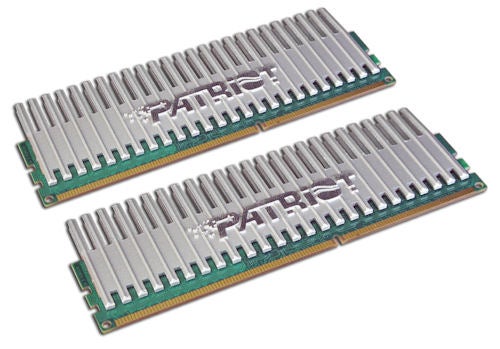
Verdict
Key Specifications
- Review Price: £205.00
Patriot may not be the first name that leaps to mind when you’re considering fast DDR3 memory. Corsair, Crucial, Kingston and OCZ are all up there but Patriot probably figures even less prominently than the likes of GeIL and G.Skil so we were intrigued by the offer of some Patriot PVS32G1866LLK memory.
It’s the figure of 1866 that draws your eye as it refers to a colossal clock speed of 1,866MHz. That’s a huge number and it’s also an unusual number as it gets ahead of the current crop of front side bus speeds.
DDR3 started at 1,066MHz and progressed through 1,333MHz to 1,600MHz. Nvidia’s new 790i Ultra chipset supports overclocked memory speeds of 1,800MHz and 2,000MHz so where the heck does 1,866MHz fit in the great scheme of things. The answer appears to lie in the memory bandwidth rating which is a nice round PC3-15000 but it’s best if we don’t get too hung up on pure clock speed. Memory has a DDR speed so the 1,866MHz is a true claimed clock speed of 933MHz while the front side bus of even the fastest Penryn Core 2 processor is a true 400MHz. You’re doing very well if you overclock to 600MHz so DDR3-1333 memory has plenty of headroom for the most avid overclocker and most people will find they are able to overclock and also raise the memory multiplier.
There are two other parts of the model code that deserve mention. There’s the V for Viper that comes just after the P for Patriot. That’s a reference to the Patriot Viper Heat Shields with integrated Aluminium Copper Composite (ACC) technology which doesn’t seem like an especially obvious name for a heat shield or heat sink. 
The two sides of the Viper coolers are separate with no heatpipe joining them together and they seem to have a very simple construction. Each side is made of aluminium with a coating of copper on the inner face. These Patriot modules are single sided so one heatsink is glued to the PCB while the other is glued to the eight memory modules. The top of the heat sink is castellated to increase the surface area of the cooler in much the same way that the DHX system works on high end Corsair memory.
The other significant part of the model code is the LL suffix which stands for Low Latency. The rating of the Patriot modules is 8-8-8-24 which is good without being exceptional as 1,600MHz memory typically has latencies of 7-7-7-20 while OCZ 1,800MHz has the same 8-8-8-24 so it’s fair to say that Patriot is delivering good numbers without breaking new ground.
Patriot claims that you get the most from this memory when you enable Intel’s Extreme Memory Profiles (XMP) which is a feature of Intel P35, X38 and X48 motherboards. XMP extends the Serial Presence Detect (SPD) figures that you find in every module of memory. Plug the Patriot memory into an appropriate motherboard and the system should automatically run the memory at maximum speed without input from the user.
It just so happens that there’s a Gigabyte X38-DQ6 on the shelf and it was the work of moments to plug in a Core 2 Extreme QX9770 with some extra voltage fed to the memory and processor. The Patriot memory requires 1.9V to hit full speed which is par for the course as all fast memory requires a small amount of extra voltage. We compared the Patriot memory with some OCZ PC3-1600 and it rapidly became clear that the Gigabyte front side bus won’t overclock with the QX9770. It’s easy enough to raise the clock multiplier from 8x to 10x but the front side bus will barely shift and that’s not much help when you want to overclock memory.
Switching to a Core 2 Duo E8500 dropped the front side bus from 1,600MHz to 1,333MHz and suddenly the Gigabyte responded. Unfortunately it didn’t behave properly enough as neither the OCZ or Patriot would run above 1,333MHz and enabling XMP made the system refuse to start. To say we were disappointed would be an understatement but the problems felt as though they could be laid at the door of the Gigabyte motherboard.
Switching to an Asus Striker II Extreme with nForce 790i chipset was a different proposition as it worked well with both lots of memory in conjunction with the overclocked Core 2 E8500. The switch from an Intel chipset to Nvidia meant a reinstallation of Windows Vista and somewhere along the way the graphics element of PCMark05 took a dive. It was the same MSI NX8800GT graphics card with the same drivers but the performance took a significant dip and it impacts the Overall score of PCMark05 too. Comparing the CPU and Memory scores between the Asus and Gigabyte motherboards gives us a valid result though.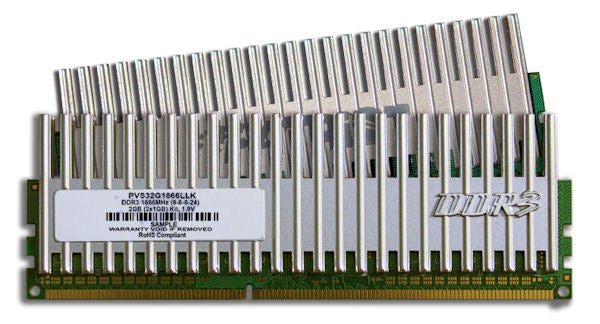
XMP doesn’t apply to Nvidia chipped motherboards so some manual adjustments would be necessary. The OCZ happily ran at 1,600MHz with automatic latencies of 9-9-9-24 and a PCMark05 Memory score of 8,298 marks. Switching to the Patriot we started with the memory running at 1,280MHz which was the fastest speed it had managed on the Gigabyte X38. The tighter latency figures increased bandwidth and delivered an improved PCMark05 Memory score. When we increased the memory speed to the maximum rated speed of 1,866MHz the latencies slowed by a huge amount to 8-13-13-36 and the extra clock speed had very little benefit on performance.
The final step was to lower latencies to the 8-8-8-24 figures that Patriot supplies which helped the latency test in Sandra but it little effect on performance in PCMark05.
The final, final step was to push the Patriot memory to its limits. The PC started with a memory speed of 1,920MHz but trying another speed bump to 1,950MHz broke the Registry in Vista and the PC was dead.
”’Verdict”’
Patriot delivers an exceptionally high clock speed with low latency at a moderate 1.9 volts. It’s very good value compared to the fastest Corsair on the market but the extra speed of the memory delivers little in the way of apparent benefit.
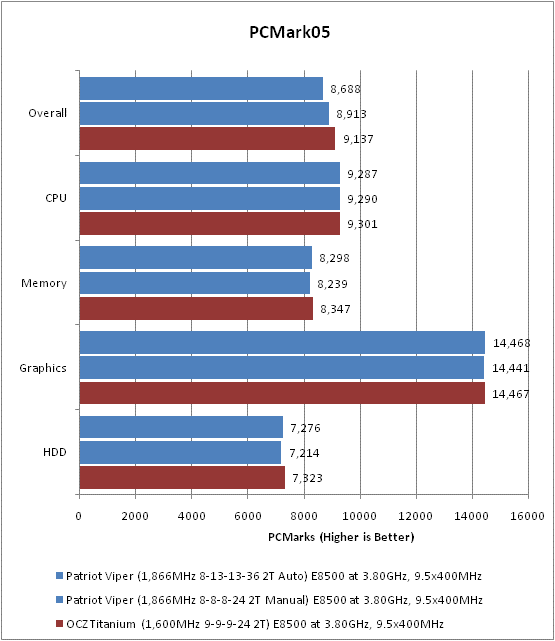
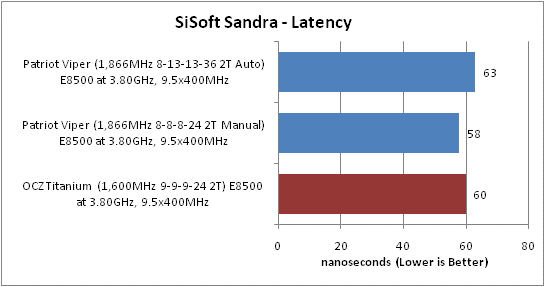
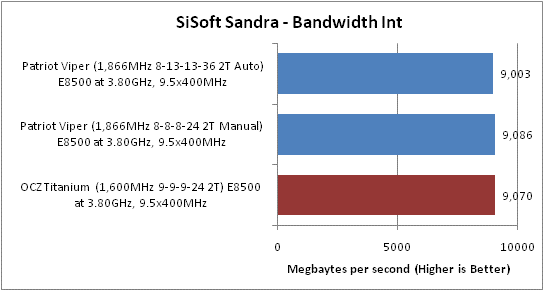
Trusted Score
Score in detail
-
Value 8
-
Performance 8

